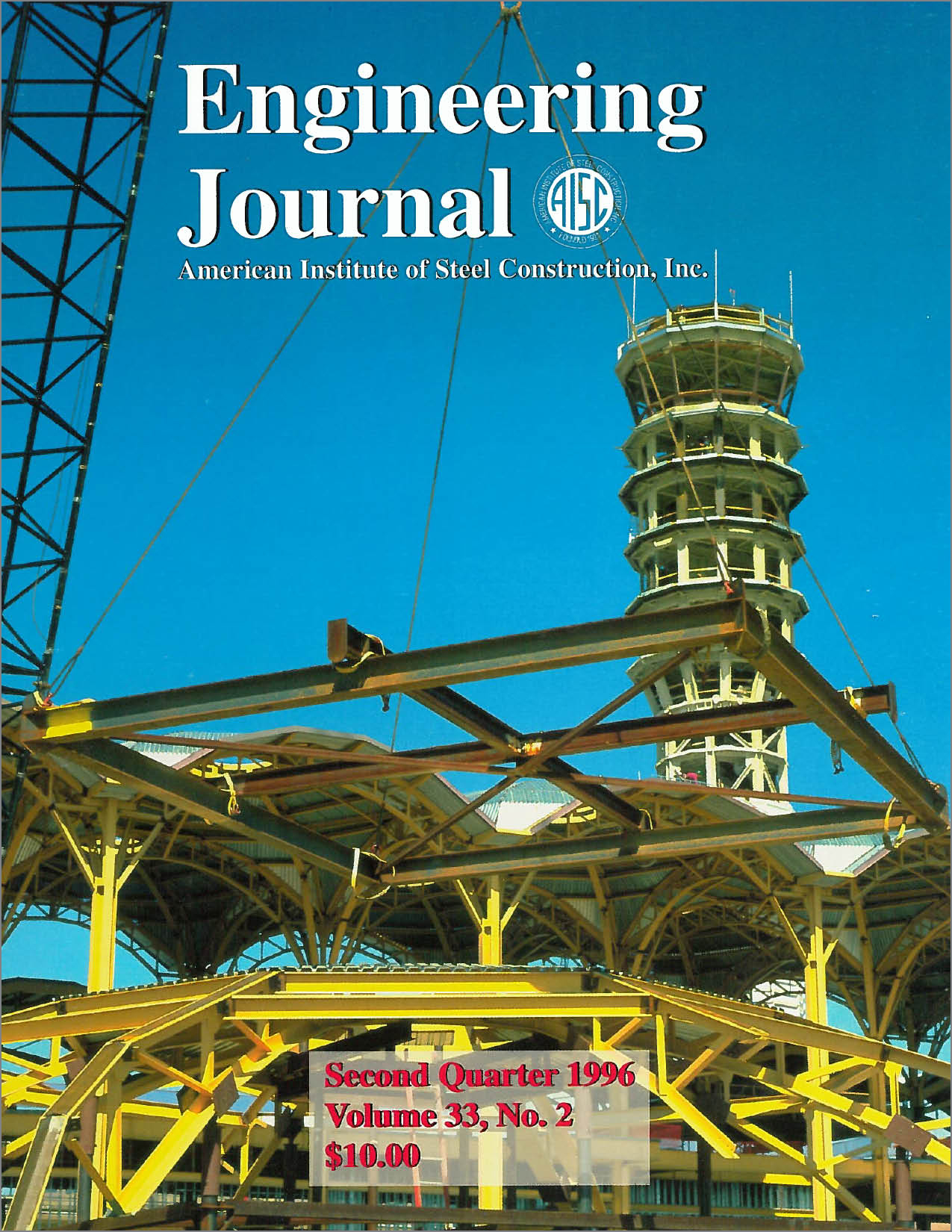Strengthening of Existing Composite Beams Using LRFD Procedures
DOI:
https://doi.org/10.62913/engj.v33i2.661Abstract
Many times, the load carrying capacity of an existing composite steel floor beam needs to be increased beyond its original design capacity due to a change in occupancy use classification or the addition of a localized heavy load. For example, this situation occurs frequently in an office building that was initially designed using a live load of 50 pounds per square foot where a tenant wants to locate a library that requires a live load of 150 pounds per square foot. Or perhaps a tenant would like to place a very heavy object in a certain location that is beyond the capacity of the existing floor framing. One of the many advantages of a steel framed structure is the relative ease and economy of the addition of reinforcing to the existing members to increase their load carrying capacity. There are several techniques available to the designer for adding reinforcement to an existing steel beam. Perhaps the most often used solution is to weld a steel shape to the bottom of the beam. This paper deals with the addition of either a flat steel plate or a WT section to the bottom of the beam to moderately increase its load carrying capacity. For a major increase in capacity, the method described in this paper could easily be extended to other reinforcing shapes. This paper describes a procedure for the rapid direct solution of the required amount of steel reinforcement to be added to a composite beam to resist a given bending moment. The solution is obtained using the design aids provided and brief hand calculations. The procedure is based on Load and Resistance Factor Design (LRFD) Theory and is applicable to composite beams designed by either Allowable Stress Design (ASD) or LRFD and with either solid concrete slabs or slabs on metal deck.

